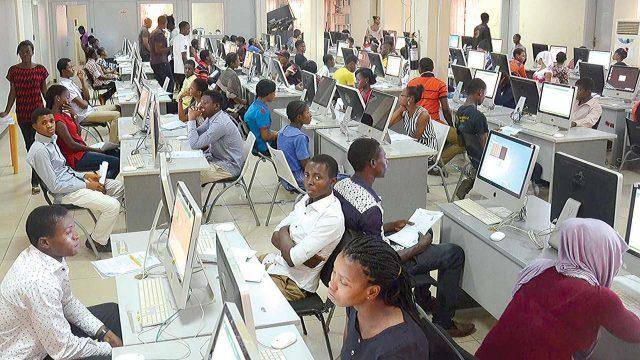Uncategorized

HEALTH EDUCATION OBJ
01-10: CCDADADCAD
11-20: ABADCBBBDC
21-30: CDCCAABBAB
31-40: CBCCCBDDAB
41-50: ADBABCBDBB
COMPLETED
(1a)
Orthodox medicine is a system of medicine in which medical doctors, nurses and other healthcare professionals deliver treatment for diseases and their symptoms to the patients through the use of pharmaceuticals or surgery.
(1b)
(i) Primary prevention
(ii) Secondary prevention
(2a)
Population dynamics is the way in which populations change over time in terms of size, composition and geographical distribution.
(2b)
(i) Fertility rate
(ii) Mortality rate
(iii) Migration
(iv) Weather
(v) Life Expectancy
(3a)
Personality refers to the relatively stable pattern of behaviours and consistent internal states that explain a person’s behaviour tendencies
(3b)
Drug addiction is defined as a chronic, relapsing disorder characterized by compulsive drug seeking and use despite adverse consequences.
(4a)
A school health programme is a collaborative effort of the school administration, health professionals, educators, students, parents, and the community.This program focuses on promoting healthy lifestyles and creating a safe and supportive environment for students to learn and grow.
(4b)
[PICK ANY THREE]
(i) Health Education: This includes teaching students about healthy behaviors, such as healthy eating, physical activity, and stress management.
(ii) Physical Education: This provides opportunities for students to engage in physical activity and develop lifelong habits of regular exercise.
(iii) Health Services: This includes access to school nurses, health screenings, and referrals to healthcare professionals as needed.
(iv) Mental Health Services: These services support students in dealing with stress, anxiety, depression, and other mental health concerns.
(v) Nutrition Services: This includes providing healthy meals and snacks, nutrition education, and support for students with special dietary needs.
(vi) Healthy School Environment: This includes strategies for creating a safe and supportive school culture, addressing bullying and violence, and promoting positive relationships.
(vii) Parent and Community Involvement: This involves engaging families and community organizations in promoting student health and well-being.
(viii) Staff Wellness: This includes promoting the health and well-being of school staff members through wellness programs and resources.
(ix) Health Promotion for Staff: This involves providing staff with resources to help them lead healthy lives and model healthy behaviors.
(x) Crisis Management: This includes developing plans and resources to address emergencies, such as natural disasters, health emergencies, or school violence.
(5a)
[PICK ANY THREE]
(i) Standing posture – proper balance and alignment of the musculoskeletal system while standing
(ii) Sitting posture – maintaining an upright position with the back and shoulders straight while sitting
(iii) Lying posture – maintaining a proper alignment of the body while lying down, such as sleeping on the back or the side
(iv) Kneelingposture – placing one or both knees on the ground while keeping the back straight
(v) Squatting posture – bending at the knees and hips while keeping the back straight to maintain balance while squatting
(vi) Walking posture – maintaining an upright posture while walking, with the shoulders relaxed and the arms moving naturally
(5b)
[PICK ANY THREE]
(i) Maintaining good posture – be mindful of your posture while standing, sitting, and walking
(ii) Ergonomic workstations – make sure your workstation is set up in a way that allows you to maintain a proper posture while working
(iii) Regular exercise – exercising regularly can help strengthen the muscles that support good posture
(iv) Using supportive footwear – wearing shoes that provide adequate support for the feet and legs can help prevent postural defects
(v) Taking breaks – if you have to sit or stand for long periods of time, take breaks to stretch and move around to prevent muscle fatigue and stiffness.
(6i)
Antenatal refers to the period of time before the birth of a baby. It involves the medical care that a mother receives during pregnancy to ensure the health of both the mother and baby. Antenatal care typically includes prenatal check-ups, ultrasound scans, blood tests, and education on healthy pregnancy habits such as proper nutrition and exercise.
(6ii)
Artificial insemination is a fertility treatment in which sperm is artificially introduced into a woman’s reproductive system to fertilize an egg. This procedure is typically used when a couple experiences fertility challenges or when a single person desires to have a child without a partner.
(7a)
TABULATE PLS
=ENDOCRINE GLANDS=
(i) It pours it’s secretion into lymp or venous blood
(ii) Duct is absent
(iii) The secretion is transported to the target tissue through the blood
=EXOCRINE GLANDS=
(i) It does not pour it’s secretion into lymp or blood
(ii) A duct is often present
(iii) The secretion is poured directly over the target tissue
(7b)
TABULATE PLS
=ENDOCRINE GLANDS=
-UNDER EXAMPLES OF GLANDS-
(i) Pituitary gland
(ii) Thyroid gland
-UNDER SECRETION OF EACH GLAND-
(i) Dopamine
(ii) thyroxine
=EXOCRINE GLANDS=
-UNDER EXAMPLES OF GLAND-
(i) Sweat gland
(ii) Sebaceous gland
-UNDER SECRETION OF EACH GLAND-
(i) Urea
(ii) Sebum
(7c)
(i) Sensory Neurons
(ii) Motor Neurons
(iii) Interneurons
(7d)
(i) Blinking of eyes
(ii) Sneezing
(iii) Yawning.
(8a)
[PICK ANY SIX]
(i) Poor academic performance
(ii) Loss of respect from peers and authority figures
(iii) Health complications and physical harm
(iv) Damaged relationships with family and friends
(v) Decreased productivity and motivation
(vi) Increased financial burden
(vii) Participation in risky or dangerous behavior
(viii) Negative impact on mental health and emotional wellness.
(8b)
[PICK ANY FOUR]
(i) Seek professional help from a counselor or therapist
(ii) Join support groups such as Alcoholics Anonymous or Nicotine Anonymous
(iii) Limit alcohol and cigarette use to social situations only
(iv) Practice stress-reducing activities such as exercise, meditation or yoga
(v) Set achievable goals and track progress
(vi) Reward oneself for making progress and achieving success.
(8c)
[PICK ANY THREE]
(i) Alcohol use disorder (alcoholism)
(ii) Cigarette smoke-related lung cancer
(iii) Chronic obstructive pulmonary disease (COPD)
(iv) Cardiovascular disease
(v) Mental health issues such as anxiety or depression.
(8d)
[PICK ANY THREE]
(i) Nicotine
(ii) Tar
(iii) Carbon monoxide
(iv) Chemicals such as formaldehyde, ammonia, and benzene
(v) Heavy metals such as lead, arsenic, and cadmium.
(8e)
[PICK ANY TWO]
(i) Smokeless tobacco such as chewing tobacco or snuff
(ii) Hookah or water pipe smoking
(iii) Electronic cigarettes or vaping
(iv) Roll-your-own cigarettes or pipe smoking.
(8f)
[PICK ANY TWO]
(i) Peer pressure and social acceptability
(ii) Stressful situations or difficult life circumstances
(iii) Curiosity or experimentation
(iv) Lack of knowledge or understanding about the health risks involved.
(9a)
[PICK ANY THREE]
(i) Electrical hazards
(ii) Mechanical hazards
(iii) Chemical hazards
(iv) Ergonomic hazards
(v) Fire hazards
(9b)
[PICK ANY FOUR]
(i) Safety goggles to protect the eyes
(ii) Earplugs or earmuffs to protect the ears
(iii) Steel-toed boots to protect the feet
(iv):Hard hat to protect the head
(v) Gloves to protect the hands
(9c)
(i) Regular safety training and reminding the operator of the hazards
(ii) Providing incentives for following safety rules
(iii) Disciplinary actions may be taken if safety rules are repeatedly disregarded
(9d)
[PICK ANY THREE]
(i) Eyes
(ii) Ears
(iii) Hands
(iv) Feet
(v) Head/brain
(9ei)
[PICK ANY THREE]
(i) Burns
(ii) Cuts and lacerations
(iii) Fractures
(iv) Electrocution.
(9eii)
[PICK ANY THREE]
(i) Greater awareness of workplace safety
(ii) Improved employee health
(iii) Cost savings for employers
(iv) Employees engagement
(v) Improved job performance
RECOMMENDED TOPICS
- JAMB 2025 UTME/DE registration document – step-by-step on how to apply for UTME and DE

- JAMB postpones 2025 UTME Registration to February 3rd

- JAMB Officially Announces 2025 UTME Registration, Exam, Mock Dates, Cost and Important Details

- The official reading novel for Jamb 2025 is Lekki Headmaster

- Subjects for Computer Science in JAMB for Guaranteed Success


